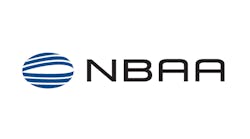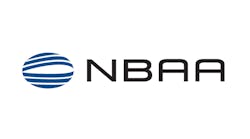The Business of Business Aircraft Avionics and Electronics
Next Gen, ADS-B, flight deck upgrades, cabin connectivity, STCs, and approvals are only a few topics regularly heard in the circles of business aircraft owners, operators, and those who maintain these sophisticated aircraft. To get a better view of these issues, Aircraft Maintenance Technology (AMT) Magazine spoke with West Star Aviation’s Director of Sales Marty Rhine. Rhine has been with West Star since 2005.
West Star’s three U.S. maintenance facilities and another three satellite locations position them to install, repair, and update many avionics systems used today. West Star Aviation is an FAA-Certified Class I, II, and III avionics repair station.
AMT: First, for the benefit of me and our readers, I’d like to frame-up the avionics work that your company is currently involved in. Can you describe West Star’s avionics business in terms of shop/bench work, new flight deck upgrades, routine avionics and electronics work, line or in-service aircraft work, cabin connectivity projects, etc.
WS: Yes. With the exception of bench work, we are doing all of the above; we are still doing a lot of WAAS/LPV, ADS-B, Wi-Fi, SATCOM upgrades, CMS, retrofits, and LCD upgrades. We have completed several FANS/CPDL-C upgrades too.
AMT: What would you say are a few of the more significant avionics and electronics related issues the industry as a whole is faced with today?
WS: Wow, that could be answered one of several ways. From a technology standpoint, I would say that we are always chasing the commercial off-the-shelf market as it applies to phones and Wi-Fi connectivity. Whoever it was that coined the phrase “office in the sky” has really put us at a disadvantage in the avionics world today. From an implementation standpoint, ADS-B is without a doubt our biggest hurdle. Jan. 1, 2020 will quickly be upon us. As I stated before, we are doing a lot of installs today. Our quote activity has significantly increased over the last six months. In speaking with some of my colleagues/competitors we are not capturing enough installs at a rate necessary to get all of these airplanes compliant. Lastly, our biggest problem is the experience of our avionics technicians. It takes several years for an avionics technician to come up to speed, in many cases these technicians are getting promoted before they’ve really mastered their current role. Due to the fact that there is so much information to learn and retain, we find ourselves continually needing to do more research and more follow-up in trying to meet the expectations of our customers.
AMT: Looking ahead, which of these would you say will be the most critical facing business aircraft owners, operators, and flight departments in the next few years?
WS: From the answers provided I would say experience among avionics technicians because there is a scarce supply as not many are going into the avionics tech training positions in schools industry wide. West Star hires military or we hire and train ourselves for the uniqueness of the avionics aircraft.
AMT: What would you say are the biggest challenges relating to avionics and electronics work for a business aircraft maintenance provider such as West Star?
WS: Let me caveat my answer by saying that I am currently in an avionics sales position biasing my answer. I want to look at this question not as it applies to mandates but as it applies to typical avionics opportunities. There are many variables that we need to overcome to secure a win. I usually classify aircraft spending into three categories; the first category for expenditures is airframe and engines. The next two buckets are for discretionary spending; in many cases paint and interior take precedence over avionics when it comes to the level 1’s decision to spend money. Now, in many cases our customers require between three and five competitive quotes. So, as you can see, all of these variables limit the high probability of securing a win.
AMT: Can you provide a few examples of how your company addresses these challenges (best practices, etc?)
WS: In general we try to understand our customers’ needs in specifics of the opportunity, provide unbiased detailed information, respond in a timely manner, follow-up as often as needed to put ourselves in a position to earn their business and moreover win the opportunity.
AMT: We haven’t talked much about the aircraft cabin and as we all know connectivity, lighting, video conferencing, and all the tools and comforts of the office are now in many business aircraft today. What are the top issues an MRO like yours is faced with regarding the electronic systems in the aircraft cabin?
WS: The first thing would be expectation. It’s really important to manage your customers’ expectations. We already mentioned the phrase office in the sky and how it is somewhat of a trap. We spend a great deal of time communicating the difference between internet streaming and internet connectivity.
There may not be a guarantee that this information is getting to the end user. My point is, the person in the back writing the checks thinks that they have Internet like they do in the house and that may not be the case. Our next problem is when we get the afterhours call that our customers’ Wi-Fi isn’t working. This starts a series of questions, including: is the problem Wi-Fi, or the pipe off the airplane? Is the pipe off the airplane satellite based or ground based? Who is your service provider? Is it a performance issue or an expectation issue? Where is the airplane sitting? When is it flying next? Are you comfortable with your chief pilot helping us with troubleshooting this? Once we get a plan together we spend a great deal of time and money chasing broke airplanes all across the country trying to support our customers. I want to interject with a positive note here, you are asking for our struggles for the purpose of the article, but I would like to point out that we are talking about accessing internet at 40,000 feet, travelling 600 miles an hour… which is pretty awesome.
AMT: In the 2016 AMT Magazine Readership Survey, the top two critical issues identified were in this order; training on the complexity of aircraft today and recruitment and retention of employees. I’d like to hear what your view is of this and what best practices your company employs to address these two critical issues.
WS: I agree that training is very complex and challenging for the schools and instructors to stay equal to or ahead of our requirements. As for West Star we send them to schools, seminars, conventions, and online courses as available to us as with the rest of the industry. As for recruitment we work with neighboring colleges and tech schools. At both the shop and enterprise levels we are always reviewing and evaluating how to better West Star Aviation for employee retention.
AMT Magazine thanks Marty Rhine and West Star Aviation for sharing some of their insights into the avionics business.


